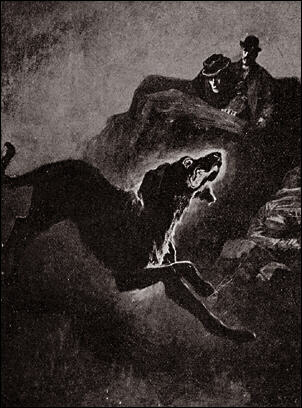Okay, I think I found the origin of this legend! I’m not 100% positive, especially since historical Celtic tradition was an oral tradition. There wasn’t a lot of written information. Morgan Daimler also cites the story shared from the Farmer’s Almanac, and I trust their judgment and sources when it comes to information like that. Anyway, the story of Cat Nights may stem from the Cat Sí – a fairy cat.
So, in Irish and Scottish mythology, there’s a legendary fairy cat known as Cat Sí (pronounced cat shee).
In the book Superstitions of the Highlands and Islands of Scotland by John Gregorson Campbell, he writes the following:
Elfin cats (cait shìth ) are explained to be of a wild, not a domesticated, breed, to be as large as dogs, of a black colour, with a white spot on the breast, and to have arched backs and erect bristles (crotach agus mùrlach ). Many maintain these wild cats have no connection with the Fairies, but are witches in disguise.
– The Project Gutenberg eBook of Superstitions of the Highlands and Islands of Scotland, by John Gregorson Campbell
This source links the Cat Sí with witches and not fairies.
The Wikipedia article for the Cat Sí quotes a folklore story collected on Dúchas (a school collection of folklore in Ireland). This one tells a story where the Cat Sí was a witch in disguise.
Once upon a time there was a man living near Ballymalis Castle, called Jeramiah Carter. One day he went to Killorglin to buy sheep. When he came home his wife told him that the cat was making mournful noise around the house all day. He went to hunt out the cat but couldn’t find it. Next day his sheep strayed away and he did not know where to find them. At last he said he would go towards the castle in search of them. When he reached Ballymalis Castle he heard a great wailing within. He waited for an hour, and at last a big cat came out on top of the castle. The cat spoke to him and told to tell her sister at home that her mother was dead. He got his sheep and went home. When he reached home he told his wife what the cat had said. When the other cat heard the news, she went away and was never seen again. It is said that those two cats were witches. They went to Ballymalis Castle and were there for many years after. I heard this story from my mother and she heard it from her uncle, who was seventy years at that time.
– Kilgobnet (C.) · The Schools' Collection | dúchas.ie
Then, in Morgan Daimler’s book Fairies: A guide to the Celtic Fair Folk, they have this to say about the Cat Sí:
Cat Sí are believed to be large, Otherworldly black cats with a single white spot on the chest. The descriptions somewhat resembles the Kellas cats, large wild cats of Scotland, which has led some to theorize that sightings of them may have been the origin of the Cat Sí stories (Matthews, 2005).
Cat Sí are often believed to be shape-changed witches, and are considered to be dangerous. The folk belief was that a witch could assume the form of a Cat Sí eight times, but upon the ninth transformation would become the cat forever (Old Farmer’s Almanac, 2012). There are also stories of Cat Sí as true fairies who can take human form and marry into human families. The MacGillivray family claims to have a Cat Sí among its ancestors…
There are particular days associated with the Cat Sí. In some folklore August 17th is the night that a witch might make the ninth transformation into permanent cat form (Old Farmer’s Almanac, 2012). Another cites the folk belief that on Samhain a saucer of milk should be left out as an offering to the Cat Sí to gain their blessing, while failing to do so could earn a curse on the household (MacGillivray, 2000).
Fairies by Morgan Daimler - Chapter 5: Denizens of Fairies
So, it sounds like the Cat Nights is a combination of folk belief mixed with biology. Cats tend to be more “yowly” during this time of year, and the belief that witches can turn into cats connects the two stories together.
![]()
![]()

